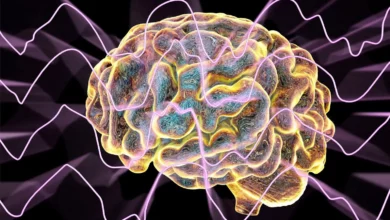
According to new research, kids who played video games for three hours per day or more performed better on cognitive skills tests involving impulse control and working memory compared to children who had never played video games.
Video Gaming May Be Associated With Better Cognitive Performance in Children
Additional research is necessary to parse the potential benefits and harms of video games on the developing brain.
Children who reported playing video games for three hours or more per day performed better on cognitive skills tests involving impulse control and working memory compared to children who had never played video games. This is according to a study of nearly 2,000 that was published recently in JAMA Network Open. For this research, data was analyzed from the ongoing Adolescent Brain Cognitive Development (ABCD) Study, which is supported by the National Institute on Drug Abuse (NIDA) and other entities of the National Institutes of Health (NIH).
“This study adds to our growing understanding of the associations between playing video games and brain development,” said NIDA Director Nora Volkow, M.D. “Numerous studies have linked video gaming to behavior and mental health problems. This study suggests that there may also be cognitive benefits associated with this popular pastime, which are worthy of further investigation.”
A number of studies have already investigated the relationship between video gaming and cognitive behavior. However, the neurobiological mechanisms underlying the associations are not well understood. Only a handful of neuroimaging studies have addressed this topic, and the sample sizes for those studies have been small, with fewer than 80 participants.
To address this research gap, scientists analyzed data obtained when children entered the ABCD Study at ages 9 and 10 years old. The research team, at the University of Vermont, Burlington, examined survey, cognitive, and brain imaging data from nearly 2,000 participants from within the bigger study cohort. They separated these children into two groups, those who reported playing no video games at all and those who reported playing video games for three hours per day or more. This threshold was selected specifically because it exceeds the American Academy of Pediatrics screen time guidelines, which recommend that video gaming time for older children be limited to one to two hours per day. For each group, the researchers evaluated the children’s performance on two tasks that reflected their ability to control impulsive behavior and to memorize information. They also analyzed the children’s brain activity while performing the tasks.
The investigators discovered that the children who reported playing video games for three or more hours per day were faster and more accurate on both cognitive tasks than those who never played. They also found that the differences in cognitive function observed between the two groups were accompanied by differences in brain activity. Functional MRI (fMRI) brain imaging analyses showed that children who played video games for three or more hours per day showed higher brain activity in regions of the brain associated with attention and memory than those who never played. At the same time, those children who played at least three hours of video games per day showed more brain activity in frontal brain regions that are associated with more cognitively demanding tasks and less brain activity in brain regions related to vision.
According to the scientists, these patterns may arise from practicing tasks related to impulse control and memory while playing video games, which can be cognitively demanding, and that these changes may lead to improved performance on related tasks. Furthermore, the comparatively low activity in visual areas among children who reported playing video games may reflect that this area of the brain may become more efficient at visual processing as a result of repeated practice through video games.
Although previous research studies have reported associations between video gaming and increases in depression, violence, and aggressive behavior, this study did not find that to be the case. Though children who reported playing video games for three or more hours per day did tend to report higher mental health and behavioral issues compared to children who played no video games, the researchers found that this association was not statistically significant. In other words, the authors could not rule out whether this trend reflected a true association or was simply the result of chance. They note that this will be an important measure to continue to track and understand as the children mature.
Additionally, the researchers stress that this cross-sectional study does not allow for cause-and-effect analyses, only an association. Therefore, it could be that children who are good at these types of cognitive tasks may choose to play video games. The authors also emphasize that their findings do not mean that children should spend unlimited time on their computers, mobile phones, or TVs, and that the outcomes likely depend largely on the specific activities children engage in. For example, they hypothesize that the specific genre of video games, such as action-adventure, puzzle-solving, sports, or shooting games, may have different effects on neurocognitive development. However, this level of specificity on the type of video game played was not assessed by the study.
“While we cannot say whether playing video games regularly caused superior neurocognitive performance, it is an encouraging finding, and one that we must continue to investigate in these children as they transition into adolescence and young adulthood,” said Bader Chaarani, Ph.D., assistant professor of psychiatry at the University of Vermont and the lead author on the study. “Many parents today are concerned about the effects of video games on their children’s health and development, and as these games continue to proliferate among young people, it is crucial that we better understand both the positive and negative impact that such games may have.”
Through the ABCD Study, researchers will be able to conduct similar analyses for the same children over time into early adulthood, to see if changes in video gaming behavior are linked to changes in cognitive skills, brain activity, behavior, and mental health. The longitudinal study design and comprehensive data set will also enable them to better account for various other factors in the children’s families and environment that may influence their cognitive and behavioral development, such as exercise, sleep quality, and other influences.
The ABCD Study, the largest of its kind in the United States, is tracking nearly 12,000 youth as they grow into young adults. Investigators regularly measure participants’ brain structure and activity using magnetic resonance imaging (MRI) and collect psychological, environmental, and cognitive information, as well as biological samples. The goal of the study is to understand the factors that influence brain, cognitive, and social-emotional development, to inform the development of interventions to enhance a young person’s life trajectory.
Reference: “Association of Video Gaming With Cognitive Performance Among Children” by Bader Chaarani, PhD; Joseph Ortigara, MS; DeKang Yuan, MS; Hannah Loso, PhD; Alexandra Potter, PhD and Hugh P. Garavan, PhD, 24 October 2022, JAMA Network Open.
DOI: 10.1001/jamanetworkopen.2022.35721
The Adolescent Brain Cognitive Development Study and ABCD Study are registered service marks and trademarks, respectively, of the U.S. Department of Health and Human Services





